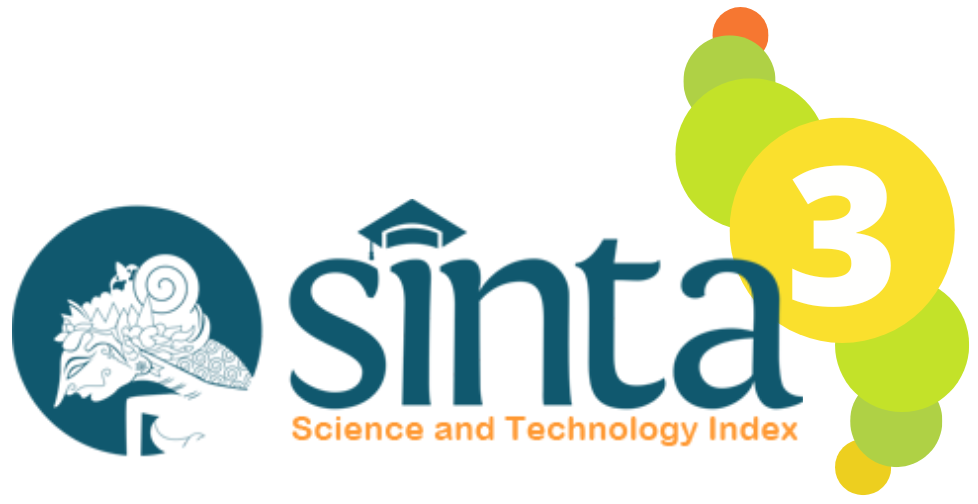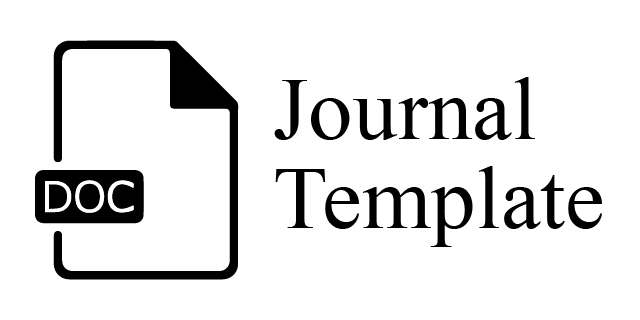BIOAKTIVITAS SENYAWA TURUNAN ALKALOID KINKONA
DOI:
https://doi.org/10.24853/jat.3.2.87-96Keywords:
, alkaloid kinkona, antimalaria, antikanker, antitumor, antimikroba, antivirus, antioksidan, antiinflamasi, antiobesitasAbstract
Alkaloid kinkona adalah senyawa aktif yang terkandung dalam tanaman kina. Alkaloid kinkona diisolasi dari kulit batang pohon kina. Secara kimia, alkaloid kinkona memiliki 2 bagian molekul utama yaitu cincin aromatik kuinolin dan cincin non-aromatik kuinuklidin yang dihubungkan dengan gugus alkohol sekunder pada karbon C-9. Struktur ini banyak mendapat perhatian di dalam penelitian kimia obat. Kami mempelajari aktivitas biologis yang dimiliki oleh alkaloid kinkona. Alkaloid kikona telah diketahui berfungsi sebagai antimalaria, akantetapi beberapa penelitian terbaru menunjukkan bahwa alkaloid kina memiliki fungsi lain yang berpotensi seperti anti-kanker, anti-tumor, anti-mikroba, anti-HBV, anti-inflamasi, anti-oksidan, anti-obesitas. Ulasan ini menggambarkan kompilasi komprehensif aktivitas biologis berbagai turunan alkaloid kinkona. Kami berharap ulasan artikel ini dapat memberikan kontribusi dalam penyebaran informasi ilmiah terkait kimia medisinal khususnya tentang spektrum aktivitas biologi senyawa turunan alkaloid kinkona.References
Garfield, S. (2000) Mauve, Faber & Faber, London, p. 224.
Mitsui, N., Noro, T., Kuroyanagi, M., Miyase, T., Umehara, K., Ueno, A. (1989). Monoamine oxidase inhibitors from Cinchonae Cortex. Chem Pharm Bull, 37(2), 363-366.
Alonso, J. (2004). Tratado de Fitofármacos y Nutracéuticos. Barcelona: Corpus, 897-901.
Phillipson, J.D., O’Neill, M.J. (1986). Novel antimalarial drugs from plants ? Parasitol Today, 2, 355–359.
Hanif, dkk. (2017). J. Kim. Terap. Indones, 19(2), pp. 54-61.
Chanakya Nath Kundu, C.N., Das, S., Nayak, A., Satapathy, S.R., Das, D., Siddharth, S. (1994). Acta Tropica, 57, 47-53.
Walsh, John J., Coughlan, D., Heneghan, N., Gaynora, C., and Bell, A. (2007). A novel artemisinin–quinine hybrid with potent antimalarial activity. Bioorganic & medicinal chemistry Letters, 17, 3599-3602.
Faidallah, H.M., Panda, S.S., Serrano, J.C., Girgis, A.S., Khan, K.A., Alamry, K.A., Therathanakorn, T., Meyers, M.J., Sverdrup, F.M., Eickhoff, C.S., Getchell, S.G., Katritzky, A.R. (2016). Synthesis, antimalarial properties and 2D-QSAR studies of novel triazole-quinine conjugate. Bioorganic & medicinal chemistry, 24, 3527-3539.
Kumura, N., Izumi, M., Nakajima, S., Shimizu, S., Kim, H., Wataya, Y., Baba, N. (2005). Biosci. Biotechnol. Biochem, 69(11), 2250-2253.
O'Neil, M.J. (ed.). (2013). The Merck Index-An Encyclopedia of Chemicals, Drugs, and Biologicals. Cambridge, UK: Royal Society of Chemistry. p. 1494.
Choong Eui Song. (2009). Cinchona Alkaloids in Synthesis and Catalysis, Ligands, Immobilization and Organocatalysis. WILEY-VCH Verlag GmbH & Co. KGaA, Weinheim
Marella, A., Tanwar, O.P., Saha, R., Ali, M.R,, Srivastava, S., Akhter, M. (2013). Quinoline: A versatile heterocyclic. Saudi Pharm J, 21, 1-12.
O’Neill, Paul M., Barton,V. E.,Ward, S. A., Chadwick, J., Staines, H.M., and Krishna, S. (2012).
Treatment and Prevention of Malaria, Springer, Basel AG, 2012, 19-44.
Genne, P., Dimanche-Boitrel, M.T., Mauvernay, R.Y., Gutierrez, G., Duchamp, O., Petit,J.M., Francois Martin, F., Chauffert, B. (1992). Cinchonine, a Potent Efflux Inhibitor to Circumvent Anthracycline Resistance In Vivo. Cancer Research, 52, 2797-2801.
O’Neill, P. M., Harrison, A. C., Storr, R. C., Hawley, S. R., Ward, S. A., Park, B. K. (1994). The Effect of Fluorine Substitution on the Metabolism and Antimalarial Activity of Amodiaquine, J. Med.Chem, 37, 1362-1370.
Edmont, D., Rocher, R., Plisson, C., Chenault, J. (2000). Synthesis and evaluation of quinolone carboxyguanidines as antidiabetic agents. Bioorg. Med. Chem. Lett, 10, 1831–1834.
Chen, Y.L., Fang, K.C., Sheu, J.Y., Hsu, S.L., Tzeng, C.C. (2001). Synthesis and antibacterial evaluation of certain quinolone derivatives. J. Med. Chem, 44, 2374–2377.
Krishnaveni, M., Kathiresan S. (2015). A Study on Protective Effect of Quinine against Lipid Peroxidation and Antioxidants Status in Human Oral Cancer Cell Line. Research Journal of Pharmaceutical, Biological and Chemical Sciences, 6(5), 295-301.
Károlyi, B.I., Bősze, S., Erika Orbán, E., Sohár,P., Drahos,L., Emese Gál, E., Csámpai, A. (2012). Acylated mono-, bis- and tris- Cinchona-Based Amines Containing Ferrocene or Organic Residues: Synthesis, Structure and in Vitro Antitumor Activity on Selected Human Cancer Cell Lines. Molecules, 17, 2316-2329; doi:10.3390/molecules17032316.
Jhanwar, D., Sharma J. (2017). Exploring Antikanker activity of Topically applied quinine sulfate on skin carcinoma-biochemical study of skin. Asian Journal of Science and Technology, Vol. 08, Issue, 10, pp.5960-5965.
Schlesinger, P.H., Krogstad, D.J., Herwaldt, B.I. (1988). Antimalarial agents: mecha-nisms of action. Antimicrob Agents Chemother, 32, 793–798.
Nour, B.Y., Faragalla, I.A., Saeed, O.K., Mohamadani, A.A. (2006). In vitro studyassessing the response of plasmodium falciparum malaria to chloroquine, sulfa-doxine/pyrimethamine, quinine and mefloquine in Wad Medani District. Sudan. Saudi Med. J, 27, 808–812.
Achan, J., Talisuna, A.O., Erhart, A., Yeka, A., Tibenderana, J.K., Baliraine, F.N., Rosen-thal, P.J., D’Alessandro, U. (2011). Quinine, an old anti-malarial drug in a modernworld: role in the treatment of malaria. Malar. J, 10, 144.
Mohapatra, P., Preet, R., Das, D., Satapathy, S.R., Choudhuri, T., Wyatt, M.D., Kundu,C.N. (2012). Quinacrine-mediated autophagy and apoptosis in colon cancer cellsis through a p53- and p21-dependent mechanism. Oncol. Res, 20, 81–91.
Preet, R., Mohapatra, M., Das, D., Satapathy, S.R., Choudhuri, T., Wyatt, M.D.,Kundu, C.N. (2012). Lycopene synergistically enhances quinacrine action toinhibit Wnt-TCF signaling in breast cancer cells through APC. Carcinogenesis, 34,277–286.
Preet, R., Mohapatra, P., Mohanty, S., Sahu, S.K., Choudhuri, T., Wyatt, M.D., Kundu,C.N. (2012). Quinacrine has anticancer activity in breast cancer cells throughinhibition of topoisomerase activity. Int. J. Cancer, 130, 1660–1670.
BS, Park., DY, Kim., PJ Rosenthal., SC, Huh., BJ, Lee., E, Park., SM, Kim., JE, Kim., TL, Huh., YJ, Choi., KH, Suh., WS, Choi., SE, Lee. (2002). Synthesis and evaluation of new antimalarial analogues of quinoline alkaloids derived from Cinchona ledgeriana Moens ex Trimen. Bioorg Med Chem Lett, 20, 12(10):1351-1355.
FJ, Prado-Prado., X, Gracia-Mera., H, Diaz-Gonzales. (2010). Multi-target spectral moment QSAR versus ANN for antiparasitic drugs against different parasite species. Bioorg Med Chem, 15,18(6):2225-2231.
A, Leverier., J, Bero., M Frederich., J, Quetin-Leclercq., J, Palermo. (2013). Antiparasitic hybrids of Cinchona alkaloids and bile acids. Eur J Med Chem, 66:355-363.
Sureda A et al. (1990). Acta Haematol, 84(1), 43-44.
McEvoy, G.K. (ed.). (2003). American Hospital Formulary Service - Drug Information. Bethesda, MD: American Society of Health-System Pharmacists, 1570.
Drug Information for the Health Care Professional. (2002). MICROMEDEX Thomson Health Care, 22nd ed. Volume 1. Greenwood Village, CO.
Plouffe, D., Brinker, A., McNamara, C., Henson, K., Kato, N., Kuhen, K., Nagle, A., Adrián, F., Matzen, J.T., Anderson, P., Nam, T.G., Gray, N.S., Chatterjee, A., Janes, J., Yan, S.F., Trager, R., Caldwell, J.S., Schultz, P.G., Zhou, Y., Winzeler, E.A. (2008). In silico activity profiling reveals the mechanism of action of antimalarials discovered in a high-throughput screen, 1,105(26), 9059-9064.
Delarue, S., Girault, S., Maes, L., Debreu-Fontaine, M.A., Labaeid, M., Grellier, P., Sergheraert, C. (2001). Synthesis and in vitro and in vivo antimalarial activity of new 4-anilinquinolines. J. Med. Chem, 44, 2827-2833.
Kaur, K., Jain, M., Reddy, R.P., Jain, R. (2010). Quinolines and structurally related heterocycles as antimalarials. Eur. J. Med. Chem, 45,3245-3264.
Peters, W., Robinson, B.L. (1992). The chemotherapy of rodent malaria. Ann. Trop. Parasitol, 86, 455-465.
Ward, S.A., Hawley S.R., Bray, P.G., O’Neill, P.M., Naisbitt, D.J., Park, B.K. (1996). Manipulation of the N-alkyl subsituent in amodiaquine to overcome the verapamil-sensitive chloroquine resistance component. Antimicrob. Agent. Chemother, 40, 2345-2349.
O’Neill, P.M., Park, B.K., Shone, A.E., Maggs, J.L., Roberts, P., Stocks, P.A., Biargini, G.A., Bray, P.G., Gibbons, P., Berry, N. (2009). Candidate selection and preclinical evaluation of N-tert-Butyl isoquine (GSK369796), an affordable and effective 4-aminoquinoline antimalarial for the 21st century. J. Med. Chem, 52,1408-1415.
Dinio, T., Gorka, A.P., McGinniss, A., Roepe, P.D., Morgan, J.B. (2012). Investigating the activity of quinine analogues versus chloroquine resistant Plasmodium falciparum. Bioorganic & Medicinal Chemistry, 20, 3292–3297.











